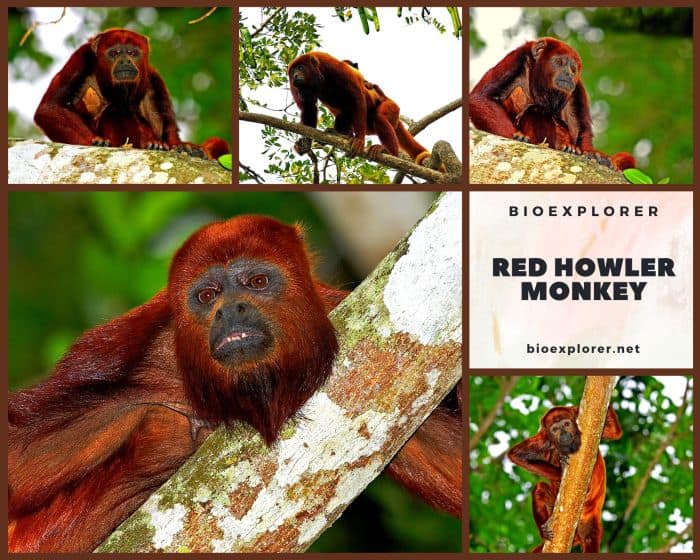
| Animalia | Primates | Atelidae | Alouatta | Alouatta seniculus |
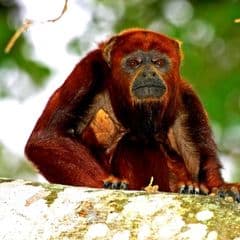

- Common Name: Colombian Red Howler
- Taxonomy Classification Year: 1766
- Monkey Size: 46 to 72 cm (18.1 to 28.35 in)
- Skin Color(s): Dark red to brownish red
- Habitat: Forest, rainforest
- Diet: Herbivorous
- Native Countries: Venezuela, Colombia, Ecuador, Peru, Brazil
Colombian Red Howler Distribution
Red Howler Monkey Characteristics
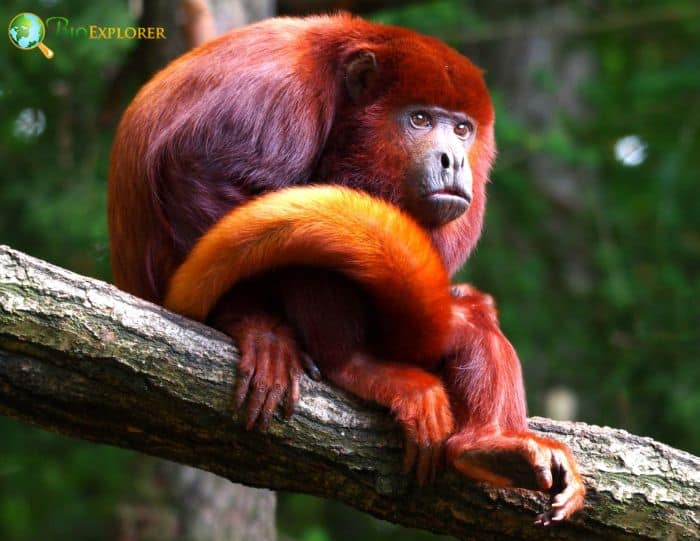
The Colombian red howler[1] or Venezuelan red howler is a South American species of howler monkey, a New World species of monkey found in the western Amazon basin.
- Alouatta seniculus have a slight sexual dimorphism.
- The females have a body length of 46 to 57 centimeters; the males, which are larger, have a body length of 49 to 72 cm.
- Both sexes have a long prehensile tail of about 49 to 75 centimeters.
- The coat color of this primate is dark reddish brown, although the hue slightly varies with age.
- Colombian red howlers have large necks with massive jaws and hyoid bones, giving them a menacing expression.
What Do Colombian Red Howlers Eat?
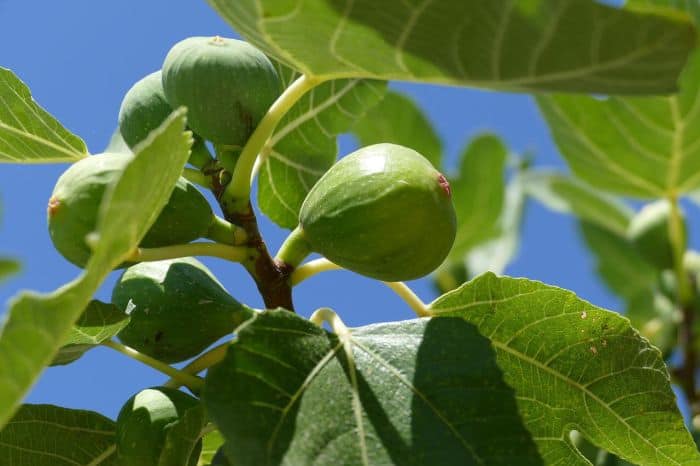
The Colombian Red Howler feeds on many plants and trees including[¶]:
- Icecreambean (Inga edulis)
- Guiana Brosimum (Brosimum guianense).
- Caucho Rubber (Castilla ulei).
- Hogplum (Spondias mombin)
- Hinchahuevos (Sapium laurifolium)
- Amarillo (Guatteria punctata)
- Breadnut (Brosimum alicastrum)
- Chalahuite (Inga acrocephala)
- Maraximbé (Trichilia tuberculata)
- Rabo De Ranton (Casearia aculeata).
- Abiu (Pouteria caimito)
- Cuero De Rana (Laetia procera).
- Fig (Ficus)
- Sweetwood (Nectandra membranacea)
- American Muskwood (Guarea guidonia).
- Guamo (Inga acreana)
- Figueira-Acreana (Ficus sphenophylla)
- Trichilia (Trichilia)
- Pachiuba (Socratea exorrhiza)
- Pacae Colorado (Inga alba).
Red Howler Monkey Facts
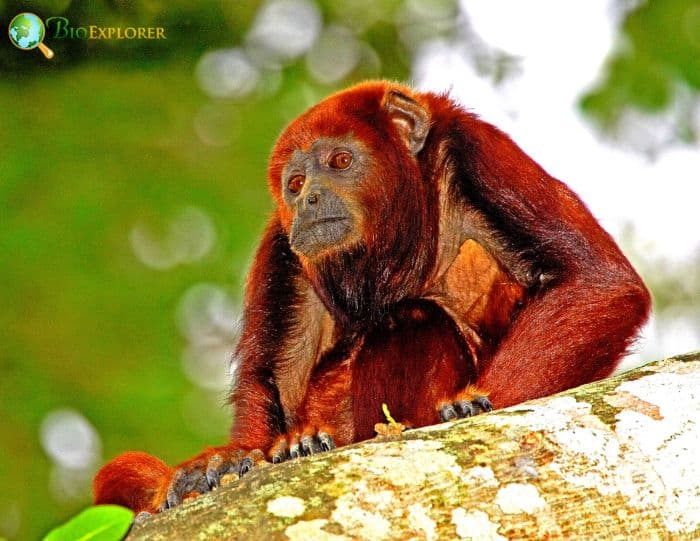
- Colombian red howler monkeys live in relatively large social groups composed of around 10 individuals, with just one or possibly two of the individuals being male.
- They are best known for their ‘morning chorus’, a deafening roar that can be heard up to 5 kilometers away! This resounding howl, made primarily by the men of a group, is answered by all other howler groups within earshot.
- Due to such an unbalanced male-to-female ratio, there is intense sexual competition between and within the Colombian red howler family groups.
- Males and females sometimes form consortships, an unusually close spatial relationship before any sexual exchange begins.
- Due to its relatively large size, Alouatta seniculus is hunted for food and other howler species and exported commercially.
Suggested Reading: Common Monkey Names
Cite This Page
APA7MLA8Chicago
BioExplorer.net. (2025, January 02). Red Howler Monkey. Bio Explorer. https://www.bioexplorer.net/animals/mammals/monkeys/red-howler-monkey/.
BioExplorer.net. "Red Howler Monkey" Bio Explorer, 02 January 2025, https://www.bioexplorer.net/animals/mammals/monkeys/red-howler-monkey/.
BioExplorer.net. "Red Howler Monkey" Bio Explorer, January 02 2025. https://www.bioexplorer.net/animals/mammals/monkeys/red-howler-monkey/.
















